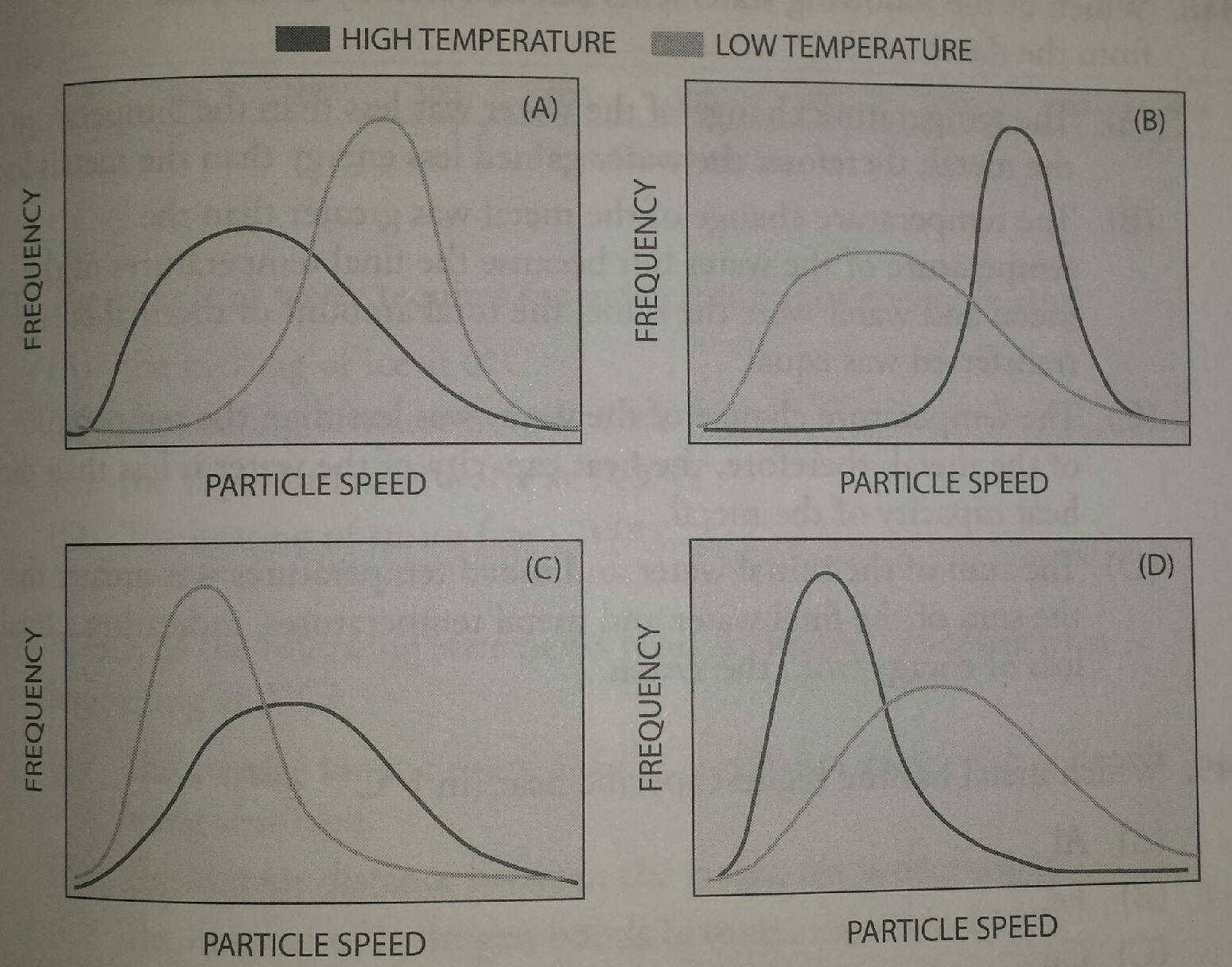
Journal Entry:
Which of the following graphs shows the changes in a gas sample moving from high temperature to lower temperature?

Learning Intentions
We will learn how to make predictions about the results of a transfer of thermal energy between systems at the particle level.
We will learn how to apply the conservation of energy to relate the magnitudes of energy changes occurring in two or more interacting systems, including identification of the systems, the type (heat vs work) or the direction of the energy flow.
We will learn how to identify a process as exothermic or endothermic and be able to explain what that means in terms of energy transfer.
We will learn what calorimetery is and how it can be used to calculate the specific heat of an unknown substance and then identify the substance.
Closing Task:
You can determine the specific heat of a metal and use it to identify a substance.
Content Standards being covered:
Energy is transferred between systems either through heat transfer or through one system doing work on the other system. (EK 5.B.1)
Temperature is a measure of the average kinetic energy of atoms and molecules. (EK 5.A.1)
The process of kinetic energy transfer at the particulate scale is referred to in this course as heat transfer, and the spontaneous direction of the transfer is always from a hot to a cold body. (EK 5.A.2)
When two systems are in contact with each other and are otherwise isolated, the energy that comes out of one system is equal to the energy that does into the other system. The combined energy of the two systems remains fixed. Energy transfer can occur through either heat exchange or work. (EK 5.B.2)